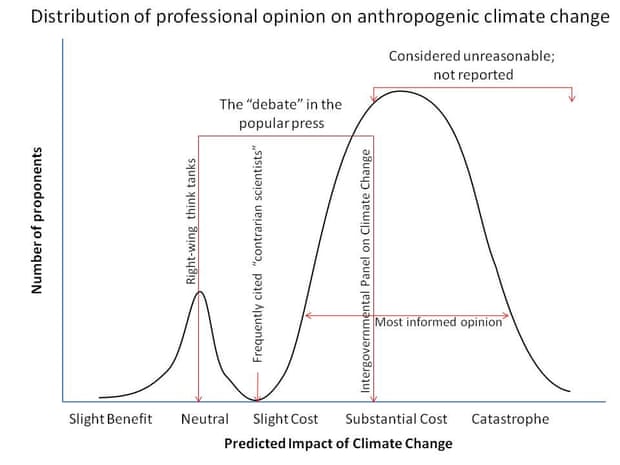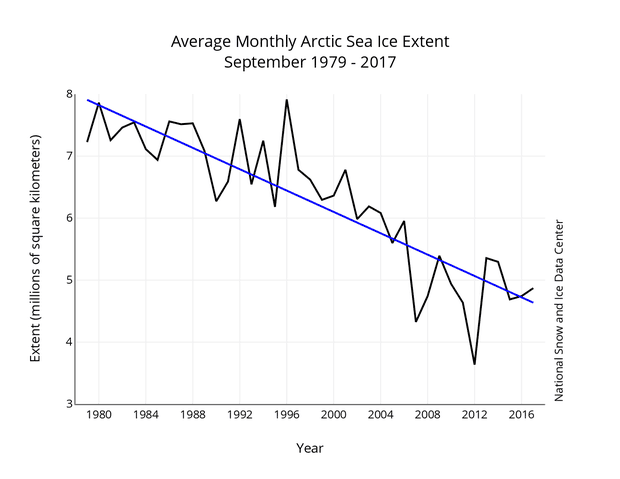I describe the SkS lists as political because their 'misinformer' lists don't include those on the 'climate action' side who actively deny science & espouse conspiracy ideation
Those who debunk climate change misinformation often face a dilemma. We’re flooded with such a constant deluge of climate myths, where should we focus our efforts? Climate misinformation is propagated via congressional climate hearings, conservative media outlets, denial blogs, and even from some genuine climate alarmists.
Specifically, there has recently been a debate as to whether Skeptical Science– a website with a database of climate myths and scientific debunkings, to which I’m a primary contributor – would be more useful and effective if it called out misinformation from ‘alarmists,’ and if it eliminated or revised its Climate Misinformers page.
There is some validity to these critiques, and in response, Skeptical Science is renaming the page ‘Climate misinformation by source.’ But the site is run entirely by a team of international volunteers, and as such, opportunity costs must be considered. Time devoted to refuting alarmists is time not devoted to debunking the constant deluge of climate denial.
Climate deniers are obviously incredibly influential. Despite their lack of supporting evidence or facts, not only do 28% of Americans continue to believe that global warming is natural and 14% that it’s not even happening, but deniers also dictate Republican Party policy. Republican policymakers constantly invite deniers to testify in congressional hearings, including many of those featured on the Skeptical Science misinformers page.
There is no symmetry on the other side of the aisle. In those same congressional hearings, Democratic Party policymakers invite mainstream climate scientists to testify. Their party policy is based on the consensus of 97% of the climate science community.
Ultimately, the issue boils down to a warped ‘Overton Window’ – the range of ideas tolerated in public discourse. In the real world, we have climate deniers on one extreme, alarmists on the other, and mainstream climate science in the middle. But the public discourse is warped – we instead have a heavy focus on climate denial among conservative media outlets and policymakers, a heavy focus on mainstream climate science among reputable media outlets and liberal policymakers, and the alarmists are largely ignored. Michael Tobis nicely diagrammed this in the climate Overton Window:

The climate Overton Window. In the public discourse, there’s a heavy focus on climate denial and mainstream climate science, while the more alarmist outcomes are largely ignored. Illustration: Michael Tobis and Stephen Ban.
That being said, there are a few reasonably well-known individuals who could be accurately described as climate alarmists. The most prominent is Guy McPherson, who decided in 2002 that climate change would likely drive humans to extinction by 2030. Sixteen years later, we’re now more than halfway to 2030 and the global human population has grown from 6.3 bn to 7.6 bn. It’s quite safe to say we won’t go extinct in the next few decades.
McPherson’s case basically boils down to arguing that feedbacks like large methane releases will soon kick in, causing a rapid spike in global warming that will lead to global extinctions. One of his primary pieces of supporting evidence is that Earth System Sensitivity – which describes how sensitive the climate is to the increased greenhouse effect over millennia – is higher than the shorter-term climate sensitivity.
That was essentially the gist of a recent study profiled here in the Guardian. Over millennia, global temperatures and sea level rise will continue to rise beyond what climate models predict will happen over the next couple of centuries. But these are slow feedbacks, and as such won’t kick in within the next few decades. Scott Johnson did a very deep dive into McPherson’s flawed arguments, for those who want to learn about them in greater detail.
As another example, Peter Wadhams predicted in 2012 that the Arctic would be ice-free in the summer by 2016. In fact, the summer of 2012 saw a dramatic decline in year-to-year Arctic sea ice extent (down to 3.6 million square km), which Wadhams believed would become the norm. That hasn’t yet been the case – there were 4.7 million square km of Arctic sea ice in the summer of 2016.

September Arctic sea ice extent. Illustration: National Snow and Ice Data Center
It’s worth nothing that Wadhams gets most of the climate science right. There is absolutely a long-term decline in Arctic sea ice, which is in the midst of what many have described as a ‘death spiral.’ And Arctic sea ice is thinning rapidly. The Arctic will eventually be ice-free in the summer, but not within the next few years. According to Met Office Chief Scientist Julia Slingo, 2025–2030 would be the earliest date for an ice-free Arctic summer, and 2040–2060 is more likely. Wadhams also believes that there may soon be a large methane release from the Arctic, but a review of the relevant research suggests this isn’t a near-term concern:
Posted by dana1981 on Monday, 9 July, 2018
 |
The Skeptical Science website by Skeptical Science is licensed under a Creative Commons Attribution 3.0 Unported License. |